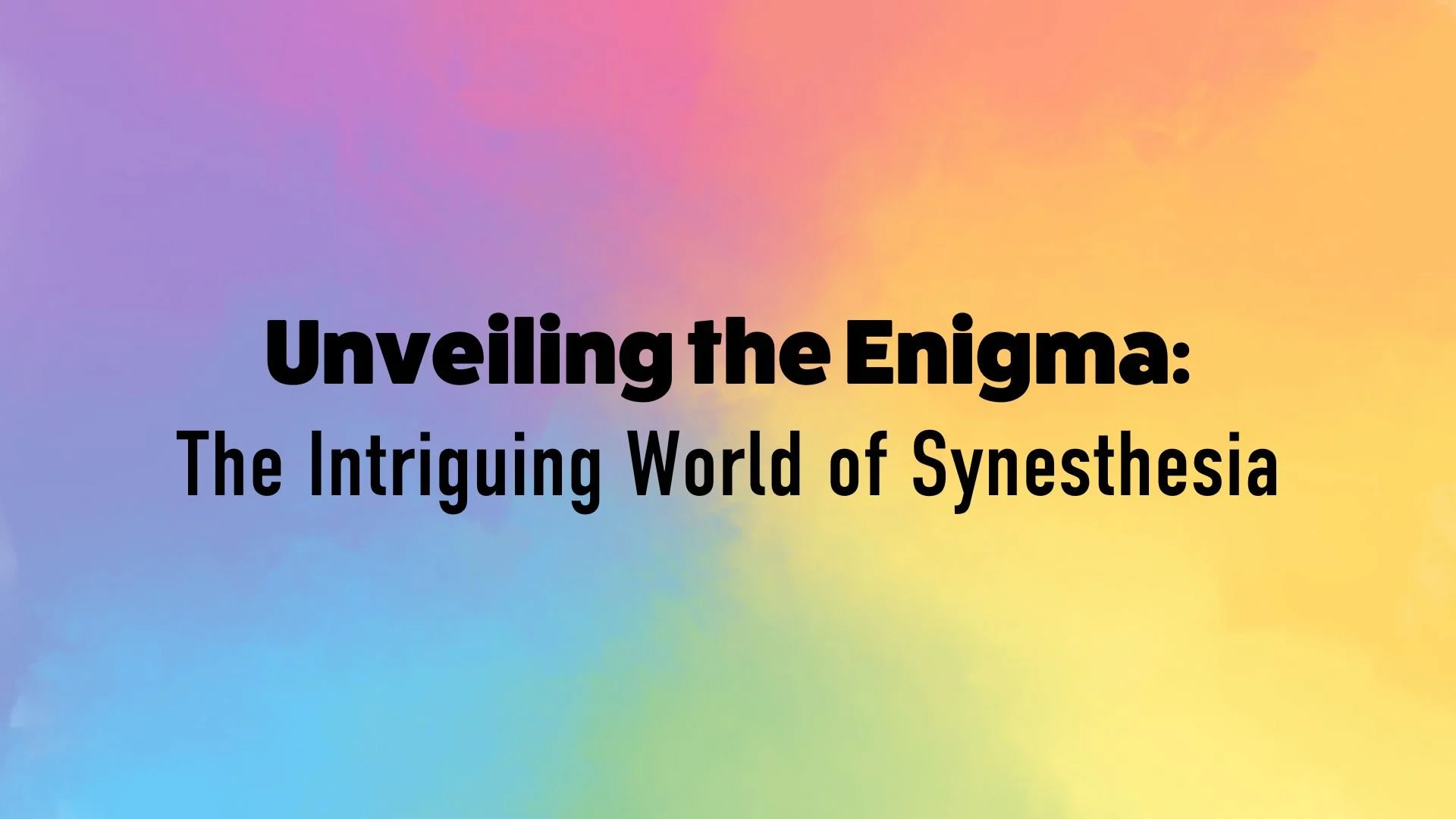Unveiling the Enigma: The Intriguing World of Synesthesia
Synesthesia is a fascinating phenomenon that unlocks a world of perception beyond the ordinary senses. It offers a glimpse into a rich tapestry of sensory experiences that blend together in extraordinary ways. In this blog post, we will dive into the intriguing world of synesthesia, exploring its different types, understanding the science behind it, and discovering its impact on perception, creativity, and human understanding.
Synesthesia: Beyond the Ordinary Senses
A Union of the Senses: Understanding Synesthesia
Synesthesia can be defined as a marvelous blend of the senses, where stimulation in one sensory modality triggers experiences in another. Unlike most people who perceive the world through distinct senses, synesthetes have the extraordinary ability to perceive and associate different sensory experiences simultaneously.
To better comprehend synesthesia, it is essential to explore its various types, each offering a unique perspective on sensory fusion. From grapheme-color synesthesia, where letters and numbers evoke vivid colors, to auditory-tactile synesthesia, where sound is translated into tactile sensations, the spectrum of synesthetic perceptions is truly diverse and awe-inspiring.
Behind the Veil of the Mind: The Science of Synesthesia
Synesthesia's origins lie within the intricate neural mechanisms of the brain. It involves a cross-wiring of the senses, where the brain's pathways responsible for processing sensory information become interconnected. This cross-wiring allows synesthetes to experience sensory crossovers that are not typically present in the general population.
While the exact causes of synesthesia are not yet fully understood, researchers have discovered that genetic and environmental factors play a significant role. Some studies suggest that synesthesia may have a genetic basis, passed down through families, while others propose that environmental factors or neuroplasticity during early brain development contribute to its emergence.
Synesthetic Sensations: A Kaleidoscope of Experiences
Colors that Sing: Grapheme-Color Synesthesia
Grapheme-color synesthesia is one of the most common forms of synesthesia, where letters, numbers, and other symbols are inherently associated with specific colors. For synesthetes with this type, the alphabet becomes a vibrant palette, with each character invoking a distinct and vivid hue. This unique way of perceiving language adds an extra layer of richness to the written word.
The Symphony of Tastes: Gustatory Synesthesia
Gustatory synesthesia merges the realms of taste and other sensory experiences, creating a symphony of flavors. In this form of synesthesia, particular tastes can evoke additional sensory perceptions, such as shapes, colors, or sounds. The synesthetic experience becomes an immersive exploration of the culinary arts, where words and music can have a palatable presence.
The Melody of Touch: Auditory-Tactile Synesthesia
Auditory-tactile synesthesia brings together the realms of sound and touch, forging a profound connection between the two senses. For synesthetes with this form, sounds and music can elicit tactile sensations on their skin or in specific parts of their bodies. The texture and timbre of auditory experiences become intertwined, transforming sound into a multisensory experience.
Synesthesia's Impact: Gifts and Challenges
The Artistic Advantage: Synesthesia and Creativity
The artistic advantage of synesthesia lies in its ability to fuel creativity and provide a unique perspective on sensory experiences. Synesthetic artists possess the extraordinary gift of translating their synesthetic perceptions into masterpieces that resonate with depth and vibrancy. For them, colors, sounds, tastes, and textures intertwine, creating a rich tapestry of sensations that can be beautifully expressed through various art forms. The merging of senses allows synesthetic artists to infuse their works with an extra layer of meaning and emotion, captivating audiences with compositions that are truly multi-dimensional. Synesthesia unlocks a world of inspiration, enabling artists to create visual art, literature, music, and other forms of expression that transcend the boundaries of traditional sensory perception, captivating and enchanting audiences in ways that are both captivating and unique.
Final Thoughts on Unveiling the Enigma: The Intriguing World of Synesthesia
Synesthesia opens the door to a world of perception that is beyond the ordinary. It reveals the intricate and fascinating ways in which our senses can intertwine and create a kaleidoscope of experiences. Understanding the science behind synesthesia helps us appreciate the diverse ways in which our brains can process and interpret the world around us.
From the artistic advantages it offers, where synesthetes can translate their sensory experiences into masterpieces, to the enhanced memory and perception they possess, synesthesia showcases the potential for human cognition to reach new heights. However, it's important to acknowledge that navigating synesthesia also comes with challenges, such as sensory overload, which require individuals to find strategies to cope and thrive in their daily lives.
Synesthesia's significance extends beyond the individual, providing valuable insights into the mysteries of neuroscience, perception, and consciousness. It serves as a reminder of the incredible diversity of human experiences and the importance of embracing neurodiversity.
About Inspirit AI
AI Scholars Live Online is a 10 session (25-hour) program that exposes high school students to fundamental AI concepts and guides them to build a socially impactful project. Taught by our team of graduate students from Stanford, MIT, and more, students receive a personalized learning experience in small groups with a student-teacher ratio of 5:1.

